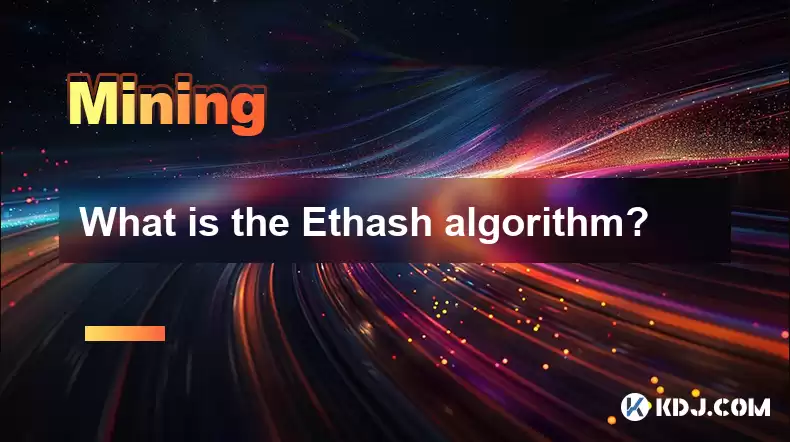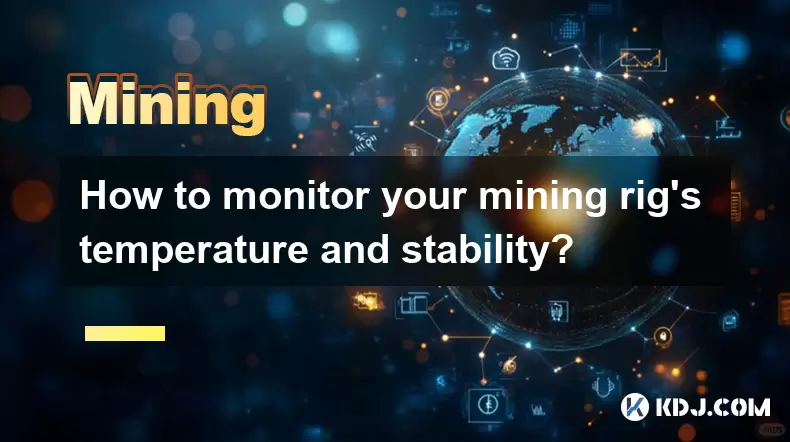-
 Bitcoin
Bitcoin $116400
-0.36% -
 Ethereum
Ethereum $4033
3.40% -
 XRP
XRP $3.302
-1.26% -
 Tether USDt
Tether USDt $1.000
-0.02% -
 BNB
BNB $796.1
1.67% -
 Solana
Solana $177.8
1.89% -
 USDC
USDC $0.9999
0.00% -
 Dogecoin
Dogecoin $0.2314
4.09% -
 TRON
TRON $0.3381
0.14% -
 Cardano
Cardano $0.7989
1.22% -
 Stellar
Stellar $0.4496
-1.84% -
 Chainlink
Chainlink $20.42
9.42% -
 Hyperliquid
Hyperliquid $41.17
0.88% -
 Sui
Sui $3.914
3.77% -
 Bitcoin Cash
Bitcoin Cash $584.7
1.52% -
 Hedera
Hedera $0.2632
-0.54% -
 Avalanche
Avalanche $24.09
3.40% -
 Ethena USDe
Ethena USDe $1.001
-0.02% -
 Litecoin
Litecoin $123.2
1.33% -
 Toncoin
Toncoin $3.318
-0.04% -
 UNUS SED LEO
UNUS SED LEO $8.984
-0.05% -
 Shiba Inu
Shiba Inu $0.00001323
2.85% -
 Uniswap
Uniswap $10.90
4.41% -
 Polkadot
Polkadot $3.999
3.34% -
 Dai
Dai $1.000
0.01% -
 Cronos
Cronos $0.1630
9.64% -
 Bitget Token
Bitget Token $4.484
0.82% -
 Monero
Monero $272.4
2.44% -
 Pepe
Pepe $0.00001173
6.03% -
 Aave
Aave $290.8
2.88%
What is the Ethash algorithm?
The Ethash algorithm, vital to Ethereum's secure and decentralized mining process, requires miners to solve complex puzzles using memory-intensive DAG files stored on specialized hardware.
Feb 20, 2025 at 09:30 pm

Understanding the Ethash Algorithm: A Deep Dive into Ethereum's Mining Mechanism
Key Points:
- Ethash algorithm overview and its significance in Ethereum mining.
- Step-by-step explanation of the Ethash algorithm process.
- Mining hardware compatibility and DAG file requirements.
- Key factors influencing Ethash mining profitability.
- Potential future advancements and alternatives to the Ethash algorithm.
Introduction
The Ethash algorithm lies at the core of Ethereum's mining protocol, ensuring the secure and decentralized operation of the Ethereum network. This article delves into the intricacies of the Ethash algorithm, providing a comprehensive understanding of its mechanics, requirements, and profitability factors.
Ethash Algorithm Overview
The Ethash algorithm was custom-designed for Ethereum and serves as a Proof-of-Work (PoW) consensus mechanism. It requires miners to solve complex computational problems, known as "proofs of work," in order to validate transactions and add new blocks to the blockchain. The miner who successfully solves the puzzle receives a block reward.
Step-by-Step Ethash Algorithm Process
The Ethash algorithm consists of several interlinked steps:
- Compute a pseudorandom function called Keccak-256: Miners receive a transaction and nonce as input and apply the Keccak-256 hash function to generate an output.
- Create a DAG file: The resulting Keccak-256 output is used to generate a Directed Acyclic Graph (DAG) file, which contains a set of memory-intensive information. The DAG file is unique for each Ethereum epoch.
- Fetch and store DAG file: Miners must download and store the DAG file on their mining hardware. The DAG file grows in size over time and requires significant storage space.
- Search for solutions in DAG file: Miners use the DAG file as input for a complex memory-hard computation. They search within the DAG file for a specific value that meets certain conditions.
- Solve the Ethash puzzle: The desired value, when found, represents a valid Ethash solution. Miners submit the solution to the Ethereum network for verification.
Mining Hardware Compatibility and DAG File Requirements
- GPU Mining Dominance: Ethash mining primarily relies on Graphics Processing Units (GPUs), specifically those with high memory bandwidth and computational power.
- DAG File Storage: Given the increasing size of DAG files over time, miners require specialized mining hardware with ample memory capacity to store and process the DAG file efficiently.
Factors Influencing Ethash Mining Profitability
- Hardware Performance: The efficiency and processing speed of mining hardware significantly impact profitability. Higher-end GPUs tend to yield better results.
- Electricity Costs: Electricity consumption is a major expense for miners, so regions with low electricity prices offer a competitive advantage.
- Network Difficulty: The Ethereum network adjusts its difficulty based on the hashrate, making mining more challenging over time.
- Block Rewards: The number of ETH rewards received for successfully mining a block is an important profitability factor.
Future Advancements and Alternatives to Ethash
- Ethereum 2.0 Transition: Ethereum 2.0 will migrate to a Proof-of-Stake (PoS) consensus mechanism, eliminating the need for Ethash mining.
- Alternative PoW Algorithms: Other cryptocurrencies have explored alternative PoW algorithms, such as Scrypt, X11, and Equihash, which offer different security and efficiency characteristics.
FAQs
Q: How often does the DAG file change in Ethash mining?
A: The DAG file changes every 30,000 blocks, approximately every five days.
Q: Do ASICs work with Ethash mining?
A: As of now, there are no known Application-Specific Integrated Circuits (ASICs) specifically designed for Ethash mining.
Q: What is the average block time for Ethereum mining?
A: The average block time for Ethereum mining is around 13 seconds.
Q: Is Ethash mining profitable for small-scale miners?
A: Profitability depends on various factors, but small-scale miners may face challenges due to high hardware costs and network difficulty.
Q: How much storage space is required for DAG file storage?
A: The current DAG file size is approximately 5.2GB, but it continues to grow over time.
Disclaimer:info@kdj.com
The information provided is not trading advice. kdj.com does not assume any responsibility for any investments made based on the information provided in this article. Cryptocurrencies are highly volatile and it is highly recommended that you invest with caution after thorough research!
If you believe that the content used on this website infringes your copyright, please contact us immediately (info@kdj.com) and we will delete it promptly.
- Shiba Inu (SHIB) in the Crypto Landscape: Community, Trends, and Future Outlook
- 2025-08-09 20:30:12
- Lasers in Modern Warfare: Iron Beam and the Future of Defense
- 2025-08-09 20:30:12
- Maxi Doge Presale: The Meme Coin That's Pumping Iron and Prices!
- 2025-08-09 19:10:11
- Rare Coin Warning: Don't Get Fooled by That 1p Coin!
- 2025-08-09 18:50:12
- Cardano, Unilabs, and Tron Price: Decoding the Latest Crypto Buzz
- 2025-08-09 18:30:12
- Aerodrome Finance: Price Targets and the Bullish Channel - What's Next?
- 2025-08-09 18:50:12
Related knowledge

What is "proof-of-work" and how does it relate to mining?
Aug 07,2025 at 02:03pm
Understanding the Concept of Proof-of-WorkProof-of-work (PoW) is a consensus mechanism used in blockchain networks to validate transactions and secure...

What are the differences between mining on Windows vs. Linux?
Aug 06,2025 at 11:29pm
Overview of Cryptocurrency Mining PlatformsCryptocurrency mining involves using computational power to solve complex cryptographic puzzles and validat...

How to use an old computer for cryptocurrency mining?
Aug 07,2025 at 12:42pm
Understanding the Feasibility of Using an Old Computer for MiningUsing an old computer for cryptocurrency mining may seem outdated, but it is still te...

Can you mine cryptocurrency using solar power?
Aug 07,2025 at 12:00am
Understanding the Basics of Cryptocurrency MiningCryptocurrency mining involves validating transactions on a blockchain network by solving complex cry...

How to monitor your mining rig's temperature and stability?
Aug 09,2025 at 09:43am
Understanding the Importance of Temperature Monitoring in Mining RigsMaintaining optimal temperature levels in a mining rig is essential for long-term...

How to build a mining rig inside a PC case?
Aug 06,2025 at 11:01pm
Understanding the Basics of a Mining Rig in a PC CaseBuilding a mining rig inside a PC case involves transforming a standard computer chassis into a d...

What is "proof-of-work" and how does it relate to mining?
Aug 07,2025 at 02:03pm
Understanding the Concept of Proof-of-WorkProof-of-work (PoW) is a consensus mechanism used in blockchain networks to validate transactions and secure...

What are the differences between mining on Windows vs. Linux?
Aug 06,2025 at 11:29pm
Overview of Cryptocurrency Mining PlatformsCryptocurrency mining involves using computational power to solve complex cryptographic puzzles and validat...

How to use an old computer for cryptocurrency mining?
Aug 07,2025 at 12:42pm
Understanding the Feasibility of Using an Old Computer for MiningUsing an old computer for cryptocurrency mining may seem outdated, but it is still te...

Can you mine cryptocurrency using solar power?
Aug 07,2025 at 12:00am
Understanding the Basics of Cryptocurrency MiningCryptocurrency mining involves validating transactions on a blockchain network by solving complex cry...

How to monitor your mining rig's temperature and stability?
Aug 09,2025 at 09:43am
Understanding the Importance of Temperature Monitoring in Mining RigsMaintaining optimal temperature levels in a mining rig is essential for long-term...

How to build a mining rig inside a PC case?
Aug 06,2025 at 11:01pm
Understanding the Basics of a Mining Rig in a PC CaseBuilding a mining rig inside a PC case involves transforming a standard computer chassis into a d...
See all articles

























































































